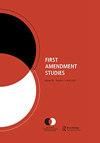食物与交流:综述
Q2 Social Sciences
引用次数: 3
摘要
传播学中一个日益重要的研究领域与食物有关。从社会学或人类学等其他学科对食物的研究中分离出来,传播学的食物学者提出了关于食物作为交流场所、实践和媒介的问题。公众总是在谈论食物;杂志货架和电视频道上充斥着这样的话语。食物被用作一种象征;人们通过吃什么来表明他们对社会、文化和阶级的忠诚。食物是日常生活的一部分,因此与日常生活的传播策略纠缠在一起。我们可能会认为,第一波关于食物和交流的研究主要集中在修辞上,探讨食物和谈论食物是如何达到说服目的的。方法是批判性和分析性的。此后,学术会议上的论文和小组讨论基本上都是围绕修辞展开的。学术界以外的流行文化充斥着对政治候选人饮食的批评。这期特刊的四篇文章采取了不同的方法,考虑了与第一修正案有关的法律问题,在食品交流的背景下。他们的方法更多地是在档案方面,结合法律分析。我赞赏这个新方向,在我的评论中,我想把这个新方向与传播学中食物研究的修辞传统联系起来。几乎任何一种人类经验都会有广泛的维度。我认为把这些维度看作是有用的,除了它们是什么之外,就像日常经验一样“更接近地面”,或者在更高的抽象层次上,或者介于两者之间。例如,我们可以看到天空中的星星,但星星通常不是大多数人日常经验的一部分,而天文学这门科学学科在更高的抽象层次上研究星星,而且也相当成功。所以我们对星星的体验在抽象的阶梯上上下移动。我认为食物是人类体验的一个维度,它的维度范围很广,从日常生活到更抽象的东西。食物在这些维度之间的整合和联系程度也很显著。它是一种存在的,原始的生存方式,一种可以成为高级艺术的审美体验,一种国家安全的资源,一种主要的经济引擎,一种政治本文章由计算机程序翻译,如有差异,请以英文原文为准。
Food and Communication: An Overview
A growing and significant field of research in Communication has been connected to food. Branching off from the study of food in other disciplines such as Sociology or Anthropology, food scholars in Communication have asked questions about food as a site, practice, and medium of communication. The public talks about food constantly; magazine shelves and television channels are full of such discourse. Food is used as a signifying practice; people declare their social, cultural, and class allegiances in what they eat. Food is a part of everyday life and thus entangled in the communication strategies of everyday life. What we might think of as a First Wave of studies in food and communication mainly took a rhetorical focus, asking how food and talk about food served persuasive purposes. Methods were critical and analytical. Papers and panels at scholarly conferences have since followed a largely rhetorical focus. Popular culture beyond the academy is full of critiques of what political candidates eat. The four essays in this special issue take a different approach, considering legal issues connected to First Amendment issues in the context of communication about food. Their methods are more on the archival side, combined with legal analysis. I applaud this new direction, and in my remarks here I want to connect this new direction to the more rhetorical tradition of food studies in Communication. Almost any kind of human experience will have a wide range of dimensions to it. I think it might be useful to think of these dimensions, in addition to whatever else they are, as lying “closer to the ground” as everyday experience, or on a much higher level of abstraction, or somewhere between. We may see the stars in the sky, for instance, but stars are usually not much a part of the everyday experience of most people, whereas the scientific discipline of Astronomy deals with stars at a much higher level of abstraction, and quite successfully, too. So our experience of stars shifts up or down on a ladder of abstraction. I think that food is a dimension of human experience that is remarkable for its range of dimensions, from the everyday to the more abstract. Food is also remarkable for the degree of integration and connection among those dimensions. It is an existential, primitive means of survival, an aesthetic experience that can become high art, a resource of national security, a major economic engine, a kind of political
求助全文
通过发布文献求助,成功后即可免费获取论文全文。
去求助
来源期刊

First Amendment Studies
Social Sciences-Law
自引率
0.00%
发文量
0
期刊介绍:
First Amendment Studies publishes original scholarship on all aspects of free speech and embraces the full range of critical, historical, empirical, and descriptive methodologies. First Amendment Studies welcomes scholarship addressing areas including but not limited to: • doctrinal analysis of international and national free speech law and legislation • rhetorical analysis of cases and judicial rhetoric • theoretical and cultural issues related to free speech • the role of free speech in a wide variety of contexts (e.g., organizations, popular culture, traditional and new media).
 求助内容:
求助内容: 应助结果提醒方式:
应助结果提醒方式:


